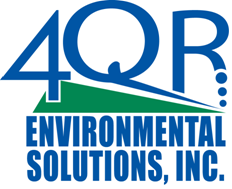Is it not incredible how quickly this year is moving along? Towards the end of the year we see many commercial properties changing ownership and an increase in Phase I and Phase II Environmental Site Assessments. The Phase I investigation includes a visual property inspection and review of historical property records, regulatory records, interviews with persons knowlegable about the property and surrounding area, as well as other reviews to help determine if there are any recognized environmental concerns, called RECs. When an REC becomes know, the Phase II investigation may be necessary to evaluate subsurface conditions in the soil and groundwater.
At times, the Phase I and Phase II Environmental Site Assessments may be performed simultaneously. This combination is beneficial when time is of the essence. For example, if you know the loan requirement for refinancing a dry cleaning facility requires a Phase I, it is highly likely that a Phase II will also be necessary if the dry cleaning activities were performed onsite. The chemicals used in dry cleaning activities create a REC because of their hazardous nature. Instead of waiting for the Phase I report to be complete, a Phase II subsurface investigation can be added into the scope of work to determine if a release of chemicals has occurred, thus allowing the question of whether further action will be necessary to decide on the loan.
By combining the work of both surficial and subsurface investigations, there could also be a cost savings on the project. Let us take the scenario above with the dry cleaner. By adding the Phase II scope of work, the project management time for setting up and scheduling the project can often be done at the same time. Mobilization to the site can be decreased into one mobilization depending on the location of the site. In other words, sometimes a two day consecutive site visit is less expensive with a per diem compared to the cost of driving back and forth. And the reporting can be combined into one document.
One of the disadvantages of combining a Phase I and Phase II Environmental Site Assessment together include not knowing all the RECs. If you mobilize a drilling rig to install temporary borings, you probably have a plan to collect soil and groundwater samples for dry cleaning chemicals. Immediately prior to the field implementation, you determine during the regulatory review that the property once had a retail paint shop onsite. In this case, it is relatively easy to add in the additional analysis, if needed, since both dry cleaning solvents and paint are volatile organic compounds. But there are circumstances, such as the addition of 8 RCRA metals or other chemical analysis, or increased drilling that may be needed if more RECs become known. Depending on the age of the paint shop, Lead may be an additional analysis. Other scenarios may be the location of offsite RECs that may warrant drilling for subsurface sampling in a different location on the property.
In today's economy, financial institutions are making loans but the circumstances for approving a loan have become harder. If there are RECs, there are the potential for releases from past onsite operations. Until it is clear that the property has not been impacted by chemicals from past operations, most loans will not be approved. And as long as there is the existence of contaminants beneath the subsurface, many loan officers today will not approve a loan until the regulatory agencies provide a No Further Action Required. Even then, a clean bill of health on the property via remediation may be required by the loan. It is important to understand the process by talking to your financial officer or environmental consultant before, during, and after the assessment is performed.
